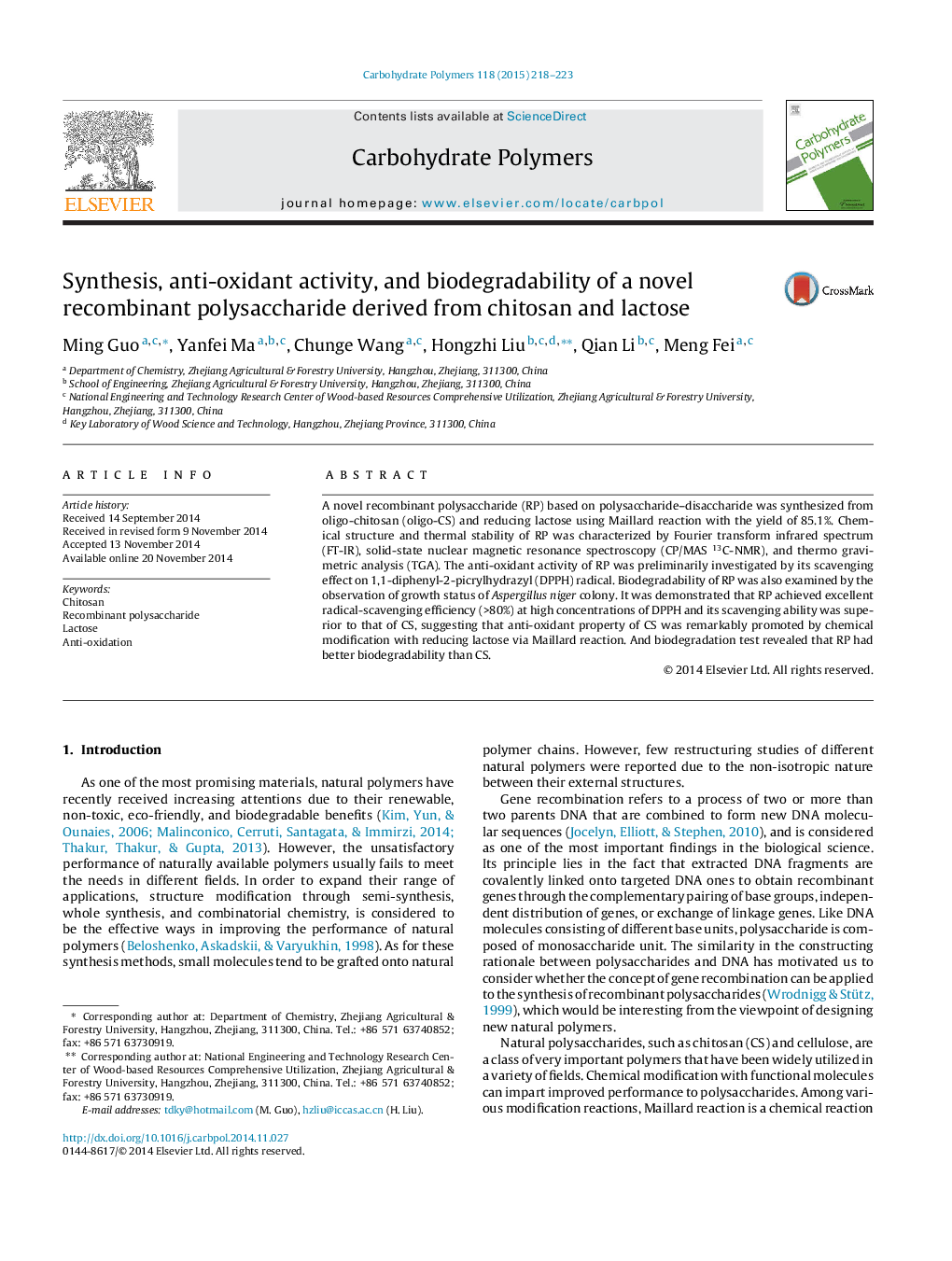| Article ID | Journal | Published Year | Pages | File Type |
|---|---|---|---|---|
| 1383856 | Carbohydrate Polymers | 2015 | 6 Pages |
•The rationale of gene recombination was employed to the synthesis of recombinant polysaccharides.•A novel recombinant polysaccharide (RP) based on polysaccharide–disaccharide was synthesized from oligo-chitosan and reducing lactose through Maillard reaction.•Such RP exhibited remarkably improved 1,1-diphenyl-2-picrylhydrazyl (DPPH) radical-scavenging activity and biodegradability.
A novel recombinant polysaccharide (RP) based on polysaccharide–disaccharide was synthesized from oligo-chitosan (oligo-CS) and reducing lactose using Maillard reaction with the yield of 85.1%. Chemical structure and thermal stability of RP was characterized by Fourier transform infrared spectrum (FT-IR), solid-state nuclear magnetic resonance spectroscopy (CP/MAS 13C-NMR), and thermo gravimetric analysis (TGA). The anti-oxidant activity of RP was preliminarily investigated by its scavenging effect on 1,1-diphenyl-2-picrylhydrazyl (DPPH) radical. Biodegradability of RP was also examined by the observation of growth status of Aspergillus niger colony. It was demonstrated that RP achieved excellent radical-scavenging efficiency (>80%) at high concentrations of DPPH and its scavenging ability was superior to that of CS, suggesting that anti-oxidant property of CS was remarkably promoted by chemical modification with reducing lactose via Maillard reaction. And biodegradation test revealed that RP had better biodegradability than CS.
